Huawei P40 review

Triple Leica camera with 3x zoom
The Huawei P40, just like the P40 Pro, features the so-called 50MP Ultra Vision Camera, the fancy name behind the improved main snapper. In addition to this primary, the P40 also offers a 16MP ultrawide snapper and an 8MP tele shooter for 3x optical zoom.
There is no ToF camera on the P40.

The main 'Ultra Vision' camera now employs a new large 1/1.28" 50MP Quad Bayer sensor, with a RYYB filter. The sensor is physically bigger than the Galaxy S20 Ultra's 1/1.33" 108MP imager. The same applies for the binned pixel size - 2.44µm vs. 2.4µm. The lens has a 23mm equivalent focal length and an f/1.9 aperture and it is stabilized.
The RYYB color filter has the green sub-pixels replaced by yellow ones. Huawei says yellow allows the sensor to collect up to 40% more light than the regular RGGB filters and this change should translate into better image quality in low-light.
This camera has improved autofocus - now it's an all pixel omnidirectional phase detection autofocus. This means that not only are there autofocus detectors on each pixel, but they are 8 of them per pixel. As a result, the camera's autofocus sensing has improved response to horizontal details whereas conventional dual pixel autofocus systems have a hard time with those. This also means autofocusing should also be generally improved in low-light.
By default, this camera outputs 12.5MP shots with a reported focal length of 27mm, which is different compared to the advertised nominal 23mm focal length that the camera is supposed to have. When you switch between 50MP and 12.5MP (default) mode, you can indeed notice that the high-res photos offer wider field-of-view, meaning some cropping is happening before we get those 12-megapixel photos.
The ultra-wide camera seems to be the same as on the P30 - a 16MP snapper behind 17mm f/2.2 lens. Autofocus is available, and you should be able to shoot good closeups in addition to the ultrawide photos.
The telephoto camera stays the same as on the P30, too - it's has an 8MP sensor behind 80mm f/2.4 lens for 3x optical zoom. Optical stabilization and autofocus are available on this camera.
Huawei P40 can shoot portraits with its main camera, while using depth information from the tele shooter. And speaking about portraits, the P40 also features an upgraded multi-spectrum color temperature sensor with support for 8 channels (up from 3) and it has AI AWB (white balance) algorithm for even more accurate color balance when taking portrait shots.
The selfie camera stays the same as on the P30 - it's a 32MP imager behind 26mm f/2.0 lens and with fixed focus. The P40 Pro models enjoy autofocus and it's a bummer we didn't get such on the P40. C'mon Huawei, enough with this petty fragmentation!
The P40 also gets an IR camera next to its selfie, which scans your face in-depth for a more secure Face Unlock.

Huawei's camera app is pretty functional. You have a Mode selector on the bottom which you can swipe left or right to change modes.

Zooming is the other less-than-ideal bit about the P40's camera UI. While the selector is reasonably accessible with the right thumb when holding the phone in portrait, operating it in landscape requires both hands. So, effectively, it's neither equally well suited to left-hand and right-hand use in portrait, nor is it usable single-handedly in the landscape. None of its competitors has these issues so Huawei can work more on improving the UI.






Camera app • Night Mode • Video • Pro mode • All other modes • Settings
The camera app is enhanced by Huawei's AI just as before. There is an improved Master AI, which recognizes and tunes settings for up to 1,500 different scenes. There's a toggle in the viewfinder for turning it off and on, so you don't have to go into settings for that. We tend to keep it off, although the recent implementations are nowhere as aggressive as they used to be with phones in the past.
There's a Pro mode too where you can adjust parameters yourself - ISO (50 to 409,600), shutter speed (1/4000s to 30s), exposure compensation (-4 to +4EV in 1/3 stop increments), and white balance (presets and specific light temperature). You can also choose the metering mode (matrix, center-weighted, and spot), and the focus mode (single, continuous, and manual). If the phone thinks you've messed up the exposure, an icon will pop up to warn you. Mind you, Pro mode is available on all three cameras, which isn't usually the case with competing phones.
For years now, Huawei phones have had both a Portrait mode and an Aperture mode. In Aperture, you can choose the simulated aperture in the range from f/0.95 to f/16. Post shot, you can change the aperture and the desired focus point within the Gallery.
In Portrait mode, you can enable and disable the background blur, but you can also choose the bokeh shapes - circles, hearts, swirl, or discs. You can also opt for simulated lighting, and you can add some beautification on a scale from 0 to 10.
Finally, there is this new feature called Golden Snap. It works when you enable Live Photo shooting and is basically an AI suggestion in the gallery for when your main photo isn't perfect (say there is a reflection or a pesky passerby in the background), but the Live Photo did manage to capture info that will help improve it by removing these reflections or passerbys.
The information from the Live Photo can be used later in the Photo Editor, which offers manual options for improving and/or removing reflections and passerby.
Image Quality
Let's start with the daylight photos. The ones coming from the main 50MP camera are saved by default in 4,096 x 3,072 pixels or 12.5MP and present outstanding quality. There resolved detail is exemplary even in areas of high complexity, the dynamic range is stellar, no visible noise, and the colors are lively even if sometimes warmer than reality.
While Huawei offers a dedicated HDR shooting mode, you will not use it, ever. The camera of the P40 has improved Huawei XD Fusion Engine - the PR name behind the multi-stacking process - and Huawei already has a master's degree in this - the photos always excel in dynamic range.
And here are some more samples from the main camera.
There is a dedicated High-res mode is on the P40 - it uses the main camera and it shoots in full 50MP. Snapping such an image doesn't take more than a second and saves a high-res photo with a bit wider field-of-view than the default 12MP mode.
Unfortunately, the high-res mode can't benefit from all software tricks the default mode uses (like multi-stacking) and the 50MP are soft with uninspiring detail level. If these 50MP shots are downscaled to 12.5MP - they won't exhibit more detail compared to the default photos, but you will get wider FoV.
In our experience, it's not worth shooting in 50MP, but the option is there, so we appreciate it.
And here are the samples.

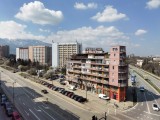

Default • Downscaled from 50MP • High-res 50MP
Moving on to the ultrawide shooter. It's a 16MP 17mm f/2.2 shooter - the same on the P30, but not as impressive as the 40MP 18mm f/1.8 on the Pro models.
Anyway, the 16MP snaps from this camera are quite good. They are sharp enough at the center, while the corners are soft due to the automatic distortion correction. The colors are nice, the contrast is great, and so is the dynamic range. Sure, those are nowhere detailed as the ones coming from the P40 Pro but are good enough for the occasional one-shot-panorama purposes.












Huawei P40 16MP ultrawide photos
Huawei offers a dedicated Super Macro mode that uses the ultrawide camera and is activated automatically when a subject is too close for focus of the main camera. The images are good, for sure, but we prefer to step back a bit and use the main camera for closeups - its photos are more detailed and livelier.



Huawei P40 16MP closeups with ultrawide camera
And here are some closeup shots with the primary snapper.




Huawei P40 12.5MP closeups with main camera
The telephoto camera is different on the P40 when compared to the Pro - basically it offers 3x optical and 5x hybrid zoom instead of 5x optical and 10x hybrid. It's also 8MP, though Huawei once again upscales its photos (it did the same on the P30 Pro) to match the 12.5 resolution of the main camera.
The 12.5MP images are sharp and detailed, if not over sharpened to mask the upscaling. The colors and contrast are excellent, and so is the dynamic range.
We would have preferred for Huawei to leave those at 8MP instead of doing this unnecessary upsizing, but we guess bad habits die hard.












Huawei P40 12.5MP 3x zoom photos
The 5x hybrid zoom photos are very good - there is much more than simple upsampling going on here and we liked what we saw. Sure, those aren't a match in detail to a real 5x tele, but quite close. And again, those would be just fine without the extra upscaling from 8MP to 12.5MP!












Huawei P40 12.5MP 5x hybrid zoom photos
We chose these two scenes to snap some photos with all fixed zoom levels available on the zoom slider.
Let's see what happens when night falls.
The main camera of the P40 snaps class-leading nighttime pictures. Those exhibit great level of detail, balanced exposure, good colors, very low noise, and the perfect sharpness. The color saturation wasn't hurt by the lack of light and overall - those are among the best a smartphone can offer today.








Huawei P40 12.5MP low-light photos
Something seems to be terribly wrong with the P40's Night Mode as it offers far inferior photos - it doesn't pop more detail in the shadows or skies, doesn't change the exposure much, and worsens the detail. We hope Huawei works this out with a software update.








Huawei P40 12.5MP Night Mode photos
The ultrawide photos we took at night aren't great, but they are better than most we've seen even from flagships. They are soft, dark, and noisy, but still - very much usable and presentable.





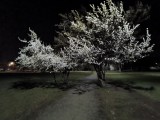

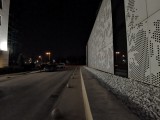
Huawei P40 16MP ultrawide low-light photos
Things take a turn for the better in ultrawide's Night mode. Here the otherwise 'mostly' usable shots become very good. Night mode helps reign in light in shadows and skies, it also improves the well-lit ones. Some detail is lost in the process, but the gains are more light and better saturation, so we'd take it. The shots are saved at 12.5MP, in this case, mind you, and you need to hold the phone steady for about 9 seconds - far from ideal.
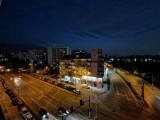
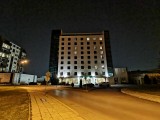





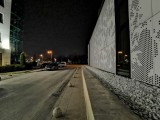
Huawei P40 12.5MP ultrawide Night Mode photos
In most low-light scenes the telephoto cam is put aside and if you tap the 3x button, you'd end up with digitally zoomed and upscaled images. Having said that, under the right conditions (above a certain light threshold), the telephoto will take over and it would capture a reasonably good-looking shot, and you can use Night Mode to improve it, too.


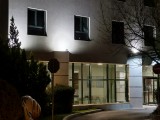
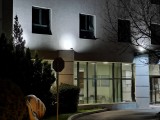
Normal • Night Mode • Normal • Night Mode
Now that you're done with the real world samples, head over to our Photo compare tool to see how the Huawei P40 stacks up against other smartphones.



Huawei P40 against the Huawei P30 and the Galaxy S20 in our Photo compare tool

































